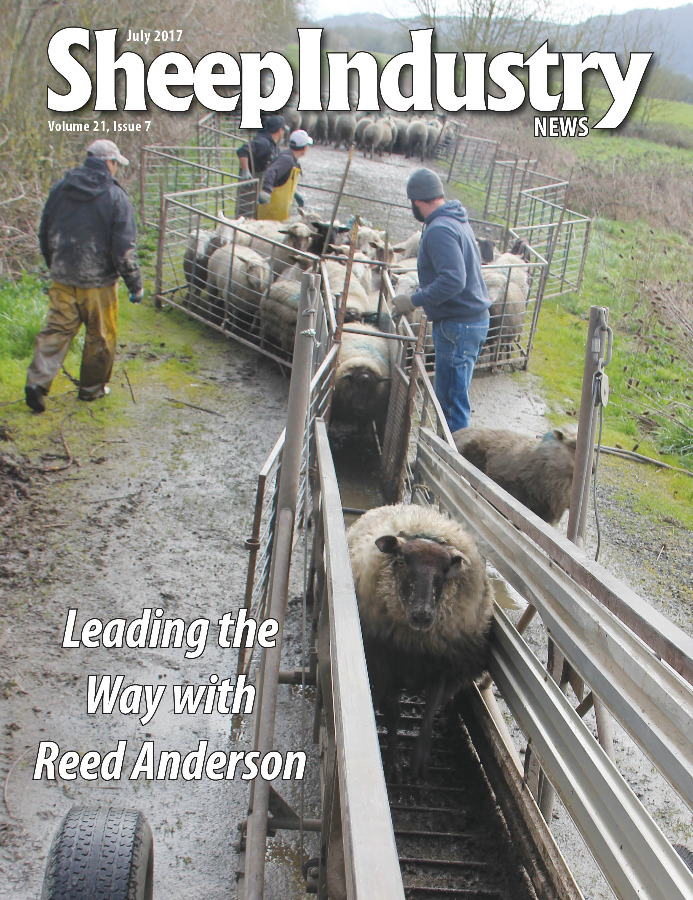To View the July 2017 Digital Issue — Click Here

Summer is Convention Season for Sheep Producers
Mike Corn, ASI President
One of the things I enjoy most about summer is the opportunity to travel and meet with other sheep producers. We have several state conventions taking place in the coming month, as well as the ASI Executive Board meeting in Park City, Utah.
I got an early start when I met up for a day with the Tri-Lamb group traveling throughout the United States with producers from Australia and New Zealand. Working through the American Lamb Board, the Tri-Lamb group sent several young American producers down under in 2016. In June, it was our turn to play host as the group traveled to destinations in Michigan, Colorado, Utah and California. Just as our American producers learned a lot on their trip to Australia and New Zealand, I can assure you their counterparts got an education on American sheep production during their time here.
I’d like to encourage all ASI members to take advantage of the educational opportunities provided through ASI and its 45 state affiliates. Annual conventions are about so much more than just handling the business of the association. They often provide the opportunity to learn more about this great industry. I’ve been running sheep all of my life, and I still learning something at every meeting I attend.
On the policy front, not much has changed. We’re still working on the front lines of budget battles and the upcoming farm bill. Funding issues that are certainly at the top of our agenda right now include scrapie eradication and the U.S. Sheep Experiment Station.
There’s been a mention that without proper funding, the U.S. Department of Agriculture might provide only metal tags for free as part of its scrapie program. As most of us know, there are serious safety concerns associated with shearing sheep that have metal tags. Previously, USDA has provided free plastic tags, which are preferred by the shearing industry.
In mid-June, Wildlife Services issued new guidelines on M-44 use while announcing plans to study the device in the months to come. This is an important tool that allows sheep producers to manage predator issues in various parts of the country. In some places, this is the only device that has proven effective in controlling coyote populations. We’ll continue to work with Wildlife Services as the agency studies the device. For the time being, a half-mile radius from occupied residences is necessary and additional signs will be placed to alert residents to M-44 use.
We’re also anxiously awaiting the announcement of other political appointees at USDA and the Department of the Interior. We rely on working with these folks on a daily basis on a variety of government programs.


